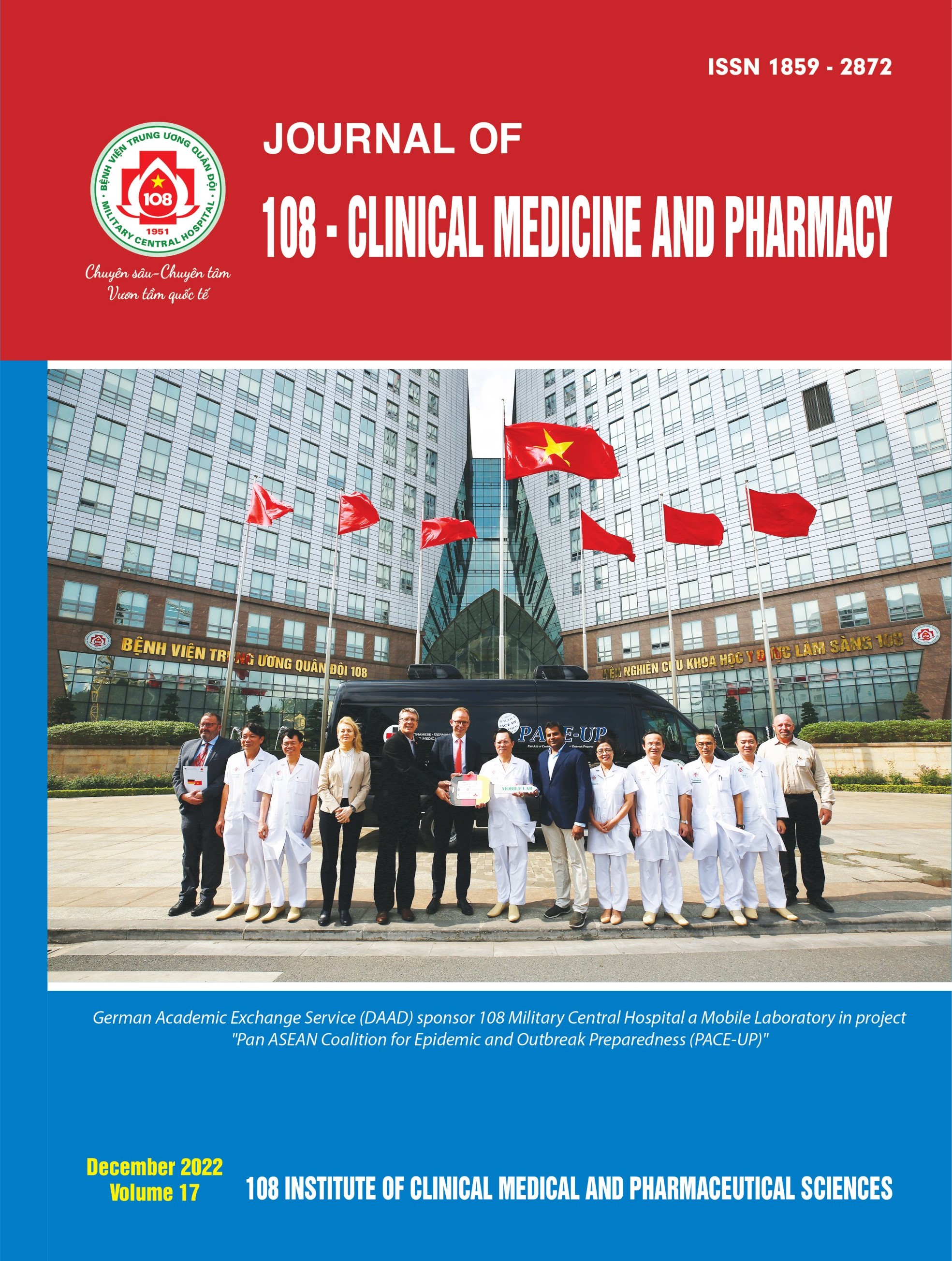Histopathology and immunohistochemistry in intrahepatic cholangiocarcinoma
Main Article Content
Tóm tắt
Objective: The study aims to describe histopathological and immunohistochemistry characteristics in identifying intrahepatic cholangiocarcinoma. Subject and method: A total of 52 patients with intrahepatic cholangiocarcinoma between June 2018 and March 2020 were consecutive in the study. 16G core needle biopsies were implemented for all the patients and ensured the length of the biopsy specimens was at least 1.5cm. All liver specimens were processed according to standard histologic methods with Hematoxylin Eosin (HE) staining, and immunohistochemical staining on an automated Benchmark Ultra machine of Ventana (Roche). Histopathological classification according to The 2019 WHO classification. Result: Most of the intrahepatic cholangiocarcinoma was well-differentiated adenocarcinoma accounted for 40.4%, fibrous connective tissue accounted for 61.5%, and tumor necrosis accounted for only 15.4%. CK19 and CK7 were 100% positive and their expression frequently diffuse. CK20 and Hepar-1 were focal positive expressions for 13.5% and 18.2%, respectively. TTF1 only was positive at 12.5%. Conclusion: Histopathological features and strongly and diffusely positive expression of CK7, CK19, and positive Hepar-1 are very useful immunohistochemistry makers for diagnosis of ICC. However, TTF1 and CK20 also are positive expression at few rates.
Article Details
Các tài liệu tham khảo
2. Bosman FT, Carneiro F, Hruban RH et al (2019) Tumors of the liver and intrahepatic bile ducts in WHO classification of tumors of the digestive system, vol 3, 5th Lyon: International Agency for Research on Cancer.
3. Cabibi D, Licata A, Barresi E et al (2003) Expression of cytokeratin 7 and 20 in pathological conditions of the bile tract, Pathol. Res. Pract 199: 65-70.
4. Chen ZI, Lin F (2015) Application of immunohistochemistry in gastrointestinal and liver neoplasms: new markers and evolving practice. Arch Pathol Lab Med: 11-23.
5. Mahul BA (2017) Intrahepatic bile ducts. AJCC Cancer Staging Manual, 8th Edition: 295-302.
6. McGlynn KA, Tarone RE, El-Serag HB (2006) A comparison of trends in the incidence of hepatocellular carcinoma and ICC in the United States. Cancer epidemiology, biomarkers & prevention: A publication of the American Association for Cancer Research, cosponsored by the American Society of Preventive Oncology. 15(6): 1198-1203.
7. Moldvay J, Jackel M, Bogos K et al (2004) The role of TTF-1 in differentiating primary and metastatic lung adenocarcinomas. Pathology & Oncology Research: 85-88.
8. El Rassi ZE, Partensky C, Scoazec JY, Henry L, Lombard-Bohas C, Maddern G (1999) Peripheral cholangiocarcinoma: presentation, diagnosis, pathology and management. Eur J Surg Oncol 25(4): 375-380. doi: 10.1053/ejso.1999.0660.
9. Vijgen S, Terris B, Rubbia-Brandt L et al (2017) Pathology of ICC. HepatoBiliary Surg Nutr 6(1): 22-34
 ISSN: 1859 - 2872
ISSN: 1859 - 2872
